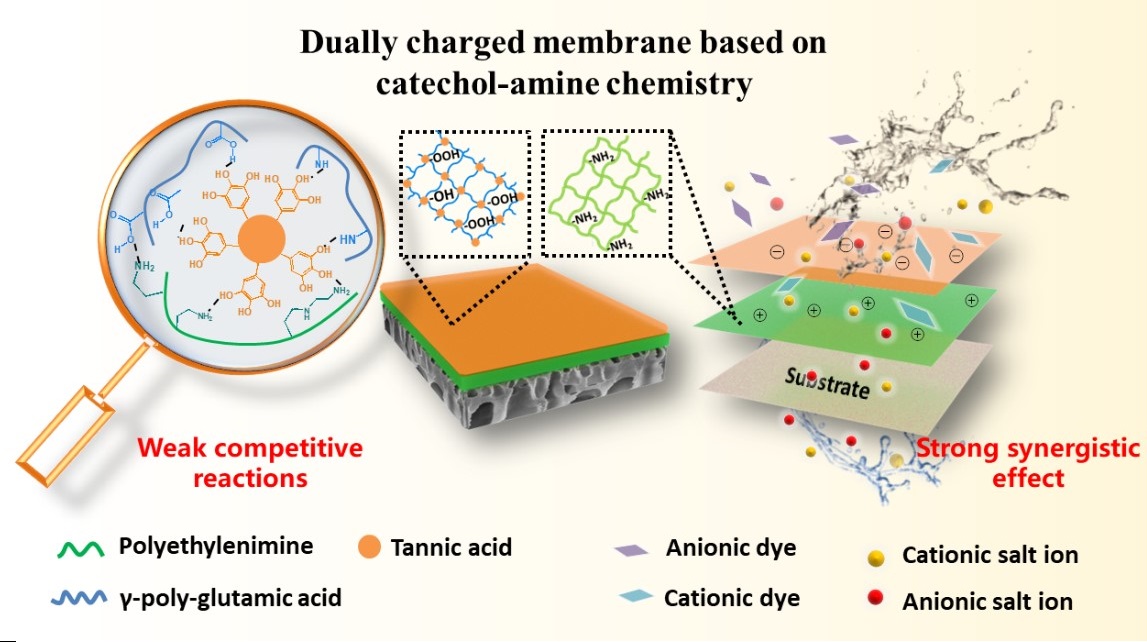Recently, a research group led by Prof. WAN Yinhua from the Institute of Process Engineering (IPE) of the Chinese Academy of Sciences developed a robust dually charged loose nanofiltration (NF) membrane for highly efficient dye/salt separation.
The study was published in Journal of Membrane Science on March 21 (DOI:10.1016/j.memsci.2021.119287).
NF is an effective method for treating textile wastewater. However, most commercially available NF membranes exhibit low selectivity in dye/salts separation due to their negatively charged dense separation layer.
The researchers prepared a NF membrane with a loose and dually charged separation layer based on a simple catechol-amine chemistry surface engineering strategy.
In the strategy, polyethyleneimine (PEI) was coated on a hydrolyzed polyacrylonitrile substrate to construct a positively charged intermediate layer, followed by codeposition of tannic acid (TA) and poly-γ-glutamic acid (γ-PGA) to engineer a negatively charged top layer.
The loose separation layer structure was attributed to the competitive reaction induced by polyphenols, which means the covalent interactions, hydrogen bonding and electrostatic adsorption among TA, γ-PGA and PEI hindered the rapid and non-uniform self-polymerization of TA.
The pre-reaction between TA and γ-PGA could further weaken those competitive reactions, tuning the pore size and charging property, and thus improving the separation performance.
Due to the synergy between size exclusion and electrostatic interaction of the loose dual-charged separation layer, the prepared membrane exhibits outstanding water permeability (36.9 Lm-2h-1bar-1) with low salt rejections (11.1% for Na2SO4) and high rejection to both positively and negatively charged dyes.
Moreover, this dually charged membrane also showed excellent acid resistance as well as satisfactory antifouling performance and long-term stability.
“This work provides a novel dimension toward the environmental-friendly approach for preparing highly selective separation membrane, and such versatile coating strategy can be employed to fabricate/modify the membrane with controllable properties for various separation applications,” said Prof. LUO Jianquan from IPE.

Diagram of the dually charged membrane fabricated via catechol-amine chemistry surface engineering (Image by CAO Yang)
Media Contact:
LI Xiangyu
Public Information Officer
Institute of Process Engineering, Chinese Academy of Sciences, Beijing 100190, P. R. China.
E-mail: xiangyuli@ipe.ac.cn
Tel: 86-10-82544826